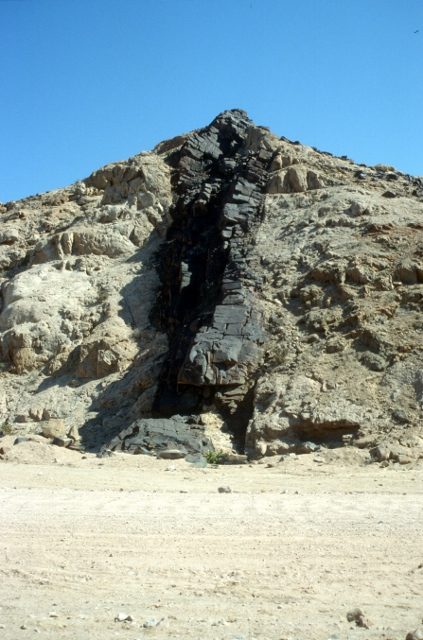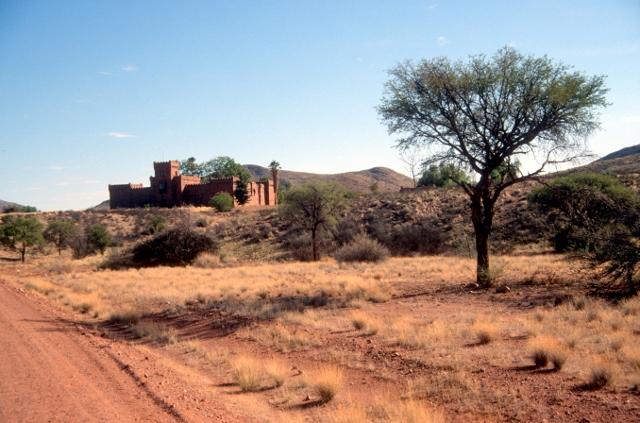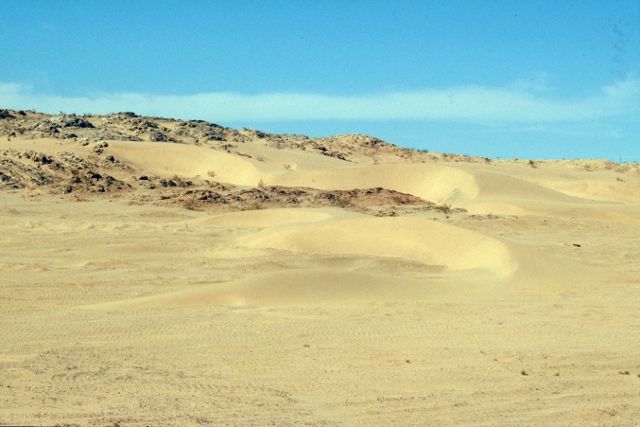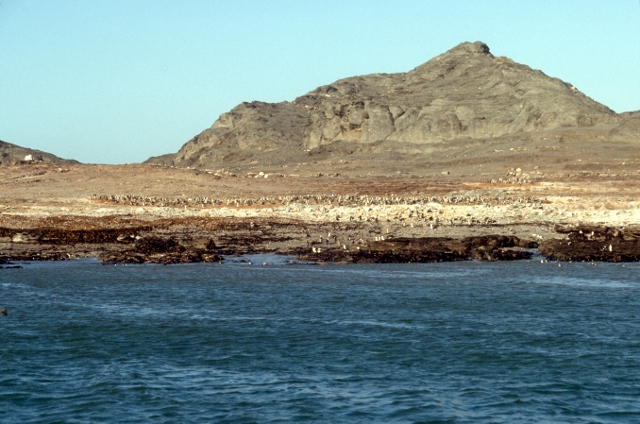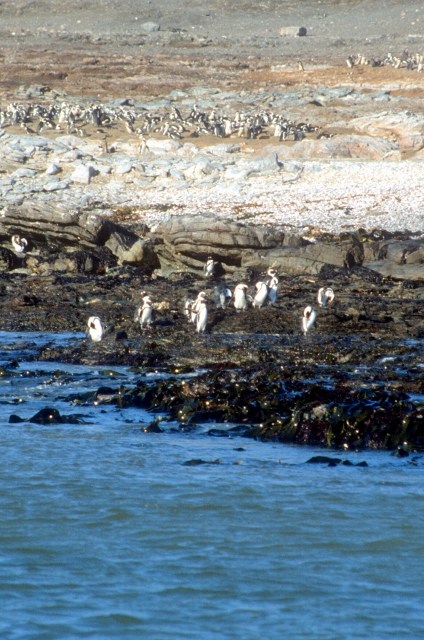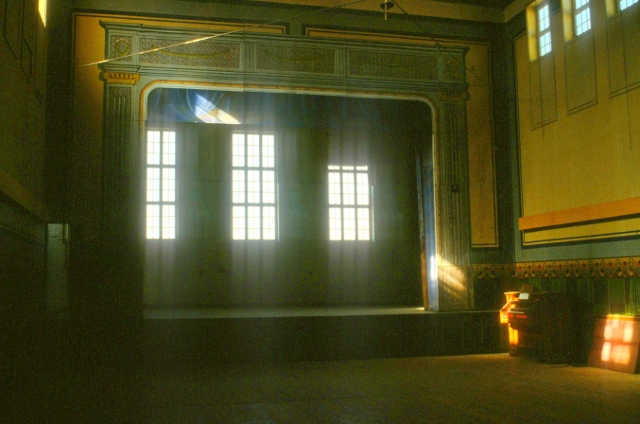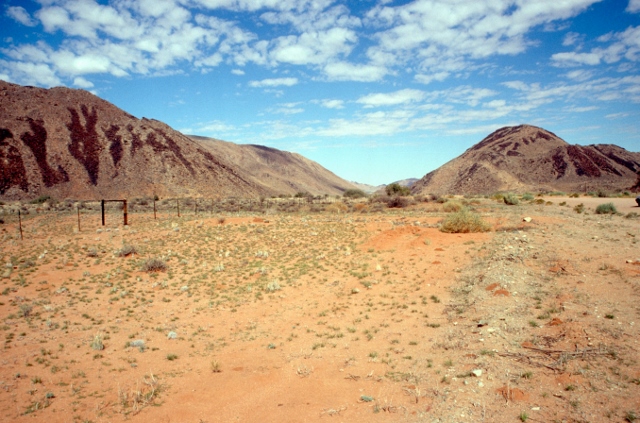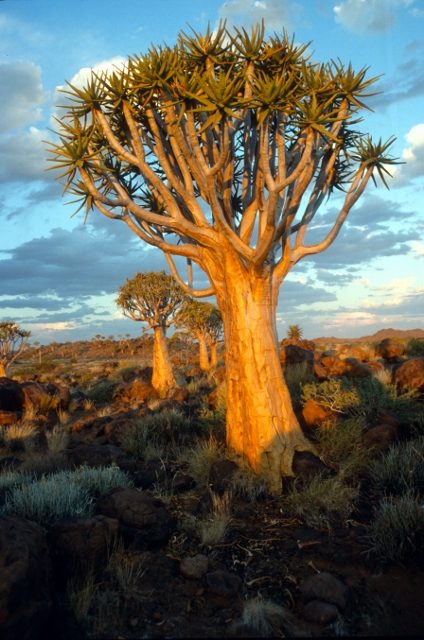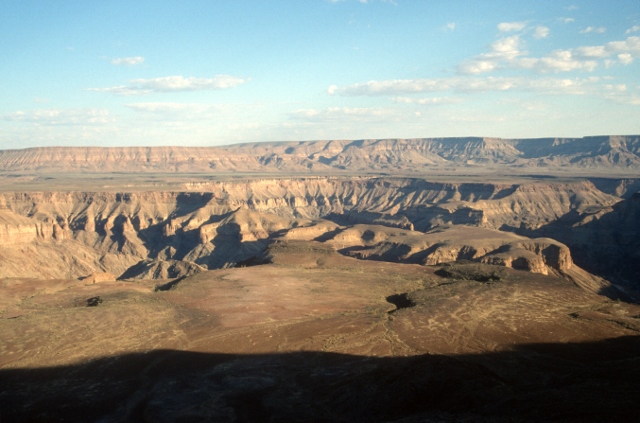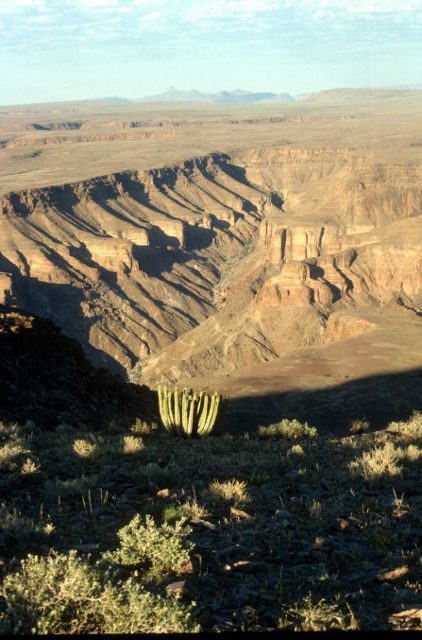April 30th – Luderitz
I know I keep repeating myself, but this country is unbelievably beautiful. Yesterday I made my way from Windhoek, where I rented a car, to a place called Maltahohe. On the way, I passed the small town of Solitaire, which honoured its name: there is nothing here, except a general store and a petrol station. I had chosen a smaller road, across the Spreethoogte Pass – poor road, and incredibly steep. But from the pass you have a magnificent view: you look down on the sandy Namib Desert, with so here and there dark, rocky hills sticking out, and in the distance the reddish dunes. There are no photographs that do justice to this view!

Maltahohe was a bit of a strange place, the first time I didn’t really feel welcome. I found my hotel all right, even got a meal and a beer, but the atmosphere was tense all the time, unfriendly. They speak German here, like they do in many parts of the country, a remnant of the German colonial era. The first Germans established themselves in the early 1880s, the German government got involved in around 1890, but this lasted only until 1915, when the German colony was forced to capitulate to British-oriented semi-independent Union of South Africa during the First World War. Yet, in other places in Namibia German-speakers have been as welcoming as English- and Afrikaans-speakers, I don’t know why Maltahohe was different.

Outside Maltahohe is the Duwisib Castle, one of those German follies from colonial times. A rich army officer-turned- farmer had it built in 1908, hoping to make it the centre of his 60,000 hectare property. But he went on a business trip in 1914, and then, when the war broke out, never returned. The house is still in good shape, though, testimony to German solidity.
Luderitz itself is a small coastal town, described by the guide books as lovely, and full of beautiful old German colonial architecture. Which, I suppose, is a matter of taste.
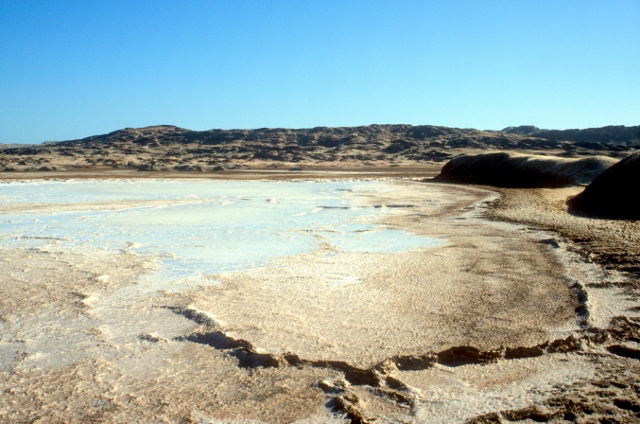
May 1st – Kolmanskop
First of May is a public holiday in Namibia, so everything was closed today. However, I managed to join a sailing trip for a couple of hours, on the turbulent waters offshore. The boat also went as close as possible – which wasn’t very close – to a small island that houses a penguin colony. For somebody who has never seen penguins before, a nice experience, even though they were much smaller than I had imagined.
Outside Luderitz is a small ghost town, Kolmanskop. In 1908 this was a flourishing town, thanks to the diamond mine that was opened nearby. At the time it had a school, a kindergarten, even an ice factory, and the directors of the mine lived in spacious villas. But the mine closed in 1930, everybody left, and nowadays the desert has taken over much of the town; sand has built up against the houses, dunes wander through the streets. You need a permit to visit the town, or join a group, which is what I did. In retrospect, it is probably better to arrange your own permit; my group, about twenty people, of which almost half were screaming children, was quite noisy, which undermines the idea of being in a ghost town somewhat!
May 3rd – Keetmanshoop
Keetmanshoop is, with its 15,000 inhabitants, a relatively large town in Namibia. It is also one of the oldest, having been established in 1860 for the German Rhenish Mission. A rich industrialist, Johan Keetmann, provided the funds for this.
Two hours south of Keetmanshoop is the Fish River canyon, which is claimed to be the second largest canyon in the world, after the Grand Canyon in the USA. It is another spectacular view, of what is now a pitiful little stream, which in earlier days managed to cut itself more than 500 meters deep into the horizontal rock layers. And the good thing is, there are a lot less tourists than at the Grand Canyon.
It is a 500 km drive back to Windhoek, from Keetmanshoop. A long, dead straight, and dead boring all-tarmac road, this time.
next: last stop in Namibia, the rock piantings of the Brandberg
